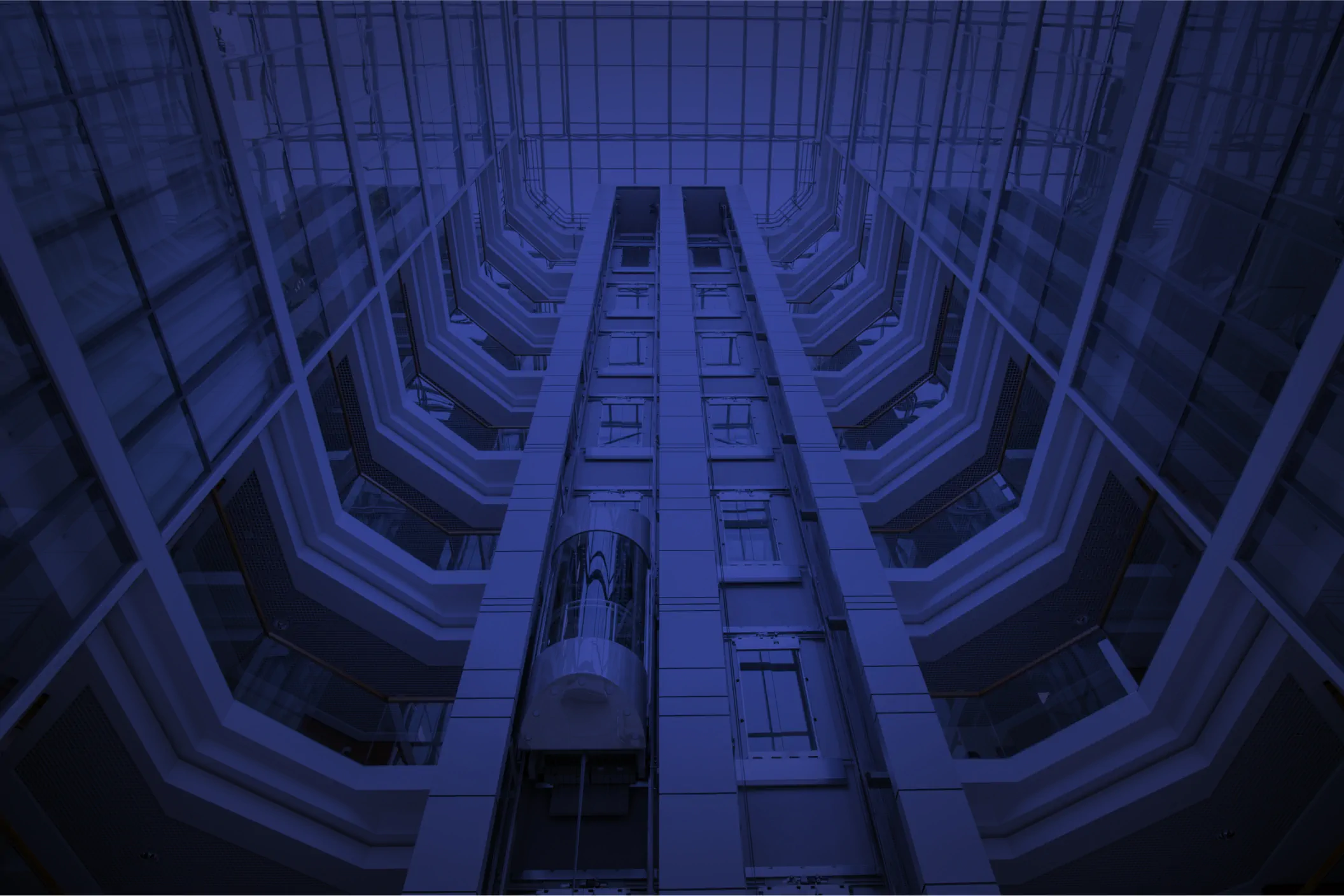
The hidden costs of poor visitor management and how to avoid them
It’s only a poor visitor experience, right? Well, what if it isn’t?! Just imagine a high-profile visitor from a company you want to do business with waiting in the lobby for 20 minutes because nobody is attending the front desk and the host isn’t notified that his guest has arrived. That’s not a great start to a business relationship.
Poor visitor management can cost your business more than just a slightly disgruntled comment from a visitor. From lost time to security and compliance risks to missed opportunities, the impact on your business is real.
How can manual visitor sign-in systems hurt workplace security and productivity? How does poor visitor management impact the visitor experience and your brand reputation? What role does visitor management play in emergency preparedness and response? In this blog post, we'll unpack the hidden costs of outdated visitor management—and explore how a modern, digital solution can solve them.
What are the downsides of poor visitor management?
1. Time and productivity loss: missing minutes that add up
31% of organizations still rely on paper lobby books or other manual processes for visitor management.1 The problem with this is that manual sign-ins, non-standardized processes, and things like repeating instructions or directions waste valuable time. If office and facility managers are tied up dealing with visitors, they don’t have time to focus on more important tasks like maintaining compliance and safety.
But how much time does inefficient visitor management actually waste each day? Consider this: if a company hosts just 12 visitors daily and each check-in takes 10 minutes—covering paperwork, host notification, and basic onboarding—that’s two hours lost every day to a manual process.
2. Security risks posed by unknown visitors and uncontrolled access
Allowing visitors to walk in and out of your office building unchecked creates serious compliance and security vulnerabilities, and 63% of organizations believe visitors represent a threat to their data. Unfortunately, poor visitor management doesn’t mitigate this issue—instead, it exacerbates it.
So, why is visitor management critical for data security and compliance? Without it, you risk misplaced paper records, no real-time visibility into who’s in the building, and unauthorized individuals slipping through. That’s not just a liability—it’s an open door to data breaches, regulatory violations, and even industry espionage. You don’t want strangers wandering your office, sneaking into your R&D department, or accessing confidential information. The consequences can include stolen intellectual property, GDPR fines, and serious damage to your business.
3. Safety risks in emergencies: when every second counts
In an emergency situation—whether it’s a fire, gas leak, or security threat—knowing exactly who is in the building is critical. Without complete, up-to-date records of all staff and visitors on site, evacuation efforts become chaotic.
If your organization is relying on memory, incomplete sign-in sheets, or outdated systems, there’s a real risk that someone could be left behind. Delays in locating missing individuals not only endanger lives but can also lead to legal consequences and reputational damage. Not practicing proper visitor tracking isn’t just an operational gap—it’s a safety hazard.
4. Poor first impressions that silently eat away at your company’s reputation
One thing’s for sure: You never get a second chance to make a first impression. Not on the recruiter in a job interview and not on the visitor that comes to your office for a business meeting. Can poor visitor experiences damage your company’s reputation? Oh yes.
Clunky, outdated processes, hosts not showing up to greet their guests, and missing information on scheduled visits suggest disorganization and can lead visitors to question your professionalism within seconds of arriving at the building. It’s even worse when guests have to awkwardly spell out their name at reception because no one knows they’re coming—an experience that feels both unprofessional and frustrating. While the impact may be as harmless as slight disgruntlement that quickly fades away, it may also influence the outcome of a meeting and lead to missed business opportunities.
Picture this scenario: A potential investor arrives for a scheduled pitch meeting, only to wait ten minutes in an unattended lobby because the host wasn't notified, followed by another ten minutes of filling out a crumpled paper form. By the time the meeting begins, their perception of your company is already tinted—and that mood carries into the discussion, potentially influencing their decision on whether to invest into your company or not.
5. Constant distractions cause frustration among staff
Outdated visitor management systems don’t just hurt efficiency—they frustrate employees and drag down morale. When office or facility managers have to manually juggle visitor check-ins, track arrivals with post-its and spreadsheets, and chase down hosts, it leads to constant context switching, burnout, and missed details. The result is a ripple effect of interruptions, security gaps, and growing emotional strain that ultimately lowers overall productivity.
6. No opportunities to get insights for improvement
Poor visitor management can lead to bad first impressions, constant distractions and frustration, security risks, and lost productivity. But what’s even worse when it comes to paper-based, manual processes is that they don’t offer the necessary data for improvement.
It’s like being stuck in a hamster wheel and wanting to escape, but not having the means needed to succeed. How do you improve processes if you can’t really pinpoint where the issues are and what their impact is? There’s no way to optimize visitor flow or spot inefficiencies if you don’t have the data that can tell you where the root of the problem sits.
For example, there could be a regular spike in visitor check-ins between nine and ten in the morning, but because you’re using paper sign-in sheets, no one realizes it. As a result, your office manager is often overwhelmed during that window, visitors wait longer, and hosts aren't always notified promptly. Over time, this leads to delays, missed meetings, and a subpar visitor experience—but no one can really pinpoint why.

How can modern visitor management systems reduce operational costs?
1. Visitor management systems save time through automation
Visitor management systems (VMS) can automate processes like check-ins, host notifications, visitor logging, and more. This frees up office and facility managers from repetitive tasks like manual sign-ins and cumbersome guest coordination and reduces time spent chasing down hosts or managing paper records.
Mobile or self-service kiosks can handle high visitor volumes efficiently, reducing the overall workload and speeding up processes across the board. And the numbers are there to prove it: 94% of visitor management system users surveyed reported improved efficiency for both hosts and guests.
☝️ Smooth check-in processes not only save time, but are also critical for enhancing the overall visitor experience. Read more about the five must-haves for a great visitor experience in this blog post.
2. Visitor management systems strengthen security and compliance
Another big advantage of visitor management solutions is that they track all visitor data in real-time, with digital logs and audit trails. With strictly defined processes, they ensure that every visitor gets a badge printed and is pre-registered for added security.
In contrast to paper documents, they provide a much higher level of data security and enhance compliance with regulations like GDPR. Integrating the VMS with access control systems can further help ensure that only authorized guests can enter the premises.
3. Visitor management systems enhance first impressions and professionalism
Streamlining check-ins with a VMS ensures that visitors aren’t kept waiting or find themselves lost and confused upon arrival. With automated processes, office and facility managers are less distracted by admin work and have more time to focus on what really matters, which is providing visitors with a friendly, personal welcome. Digital pre-registration ensures that everything (including the necessary documents) is ready when visitors arrive and that they are expected and welcomed by their hosts without long waits.
But it’s not just about speed and efficiency. Smart visitor management systems also allow companies to personalize the entire visitor experience. Custom-branded invitations or tailored arrival notifications help make your guests feel valued from the moment they’re invited. It’s no surprise that 81% of organizations report improved visitor feedback after implementing a VMS.4
4. Visitor management systems future-proof the front desk
Future-proofing front-desk operations is an integral part of enhancing the overall visitor experience and aligning visitor management with digital transformation and ensuring smooth day-to-day operations—even without a dedicated receptionist.
These systems support contactless sign-ins, self check-ins, and easy record management, facilitating effortless scalability with company growth and changing workplace protocols. By minimizing reliance on physical infrastructure and paperwork, they reduce overhead costs and further help meet ESG goals with environmentally responsible visitor processes.
5. Visitor management systems provide actionable insights for smarter decision-making
It may not be the most evident advantage, but visitor management solutions offer the added benefit of providing detailed data insights. In fact, 97% of VMS users report that their visitor management system provides them with important data.5
VMS can track metrics such as wait times, visitor frequency, peak times, and visitor types and offer detailed analytics and reporting on visitor activities. Based on these insights, businesses can rethink their resource allocation and visitor management flows to optimize processes, increase efficiency, and improve the end-to-end visitor experience.
Streamline your visitor management with deskbird
Poor visitor management can cost you more than just the occasional complaint from guests who are left waiting in the lobby unattended. It can cost you time and money, eat away at your company’s reputation, and weigh down on staff morale, ultimately affecting productivity and long-term success. The good news is that these issues are easily avoidable with the help of technology.
Visitor management solutions reduce administrative workload, improve security and compliance, and enhance the visitor experience. With Visitors by deskbird, you can invite and create visitors upfront, streamline check-ins and check-outs, promptly notify hosts via MS Teams, and send email notifications to guests to provide updates on upcoming visits.
👉 Be among the first to transform your visitor experience—book a demo to learn more about our new visitor management solution today.
Sources:
Frequently Asked Questions








.webp)

_11zon.webp)